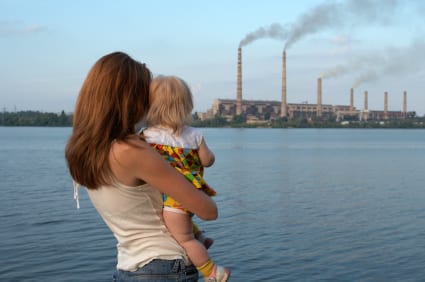It’s no secret that reproductive health is sensitive to the characteristics of an individual’s environment and that these effects vary in different parts of the world. For instance, in populations with high rates of STDs or poor healthcare services, women’s risk of experiencing premature delivery, fetal loss or prenatal mortality are higher than normal as infections routinely go untreated.
In the U.S. and other industrial societies, however, we have a whole different fish to fry — chemicals in our environment. Researchers still have a lot more work to do in order to find concrete evidence of how the environment directly affects reproductive health, but preliminary findings are definitely enough to raise some concerns.
According to Janet Pregler, M.D., director of the Iris Cantor-UCLA Women’s Health Center, there is evidence that the population’s reproductive health has been in decline over the past few decades. Men’s sperm counts have decreased by as much as 50% in industrial regions. Additionally, rates of breast, testicular and prostate cancer have gone up. And, as many of you may have experienced firsthand, more young women are having difficulty conceiving and maintaining their pregnancies. The premature birth rate has gone up, as well as birth defects of malformed male reproductive organs. Girls are beginning menstruation earlier than ever before, at age eight or nine in some cases. Premature menopause is also a concern.
“We don’t really understand why this is happening,” Dr. Pregler says, “but we do have evidence that certain chemicals will cause these problems in animals. It’s clear that research is needed to address potential links between environmental toxins and harmful reproductive effects in humans.”
Chemical production in the U.S. has increased 20-fold since World War II, which is certainly not ideal for our reproductive health. “It’s well recognized that air pollution can cause respiratory problems, but less appreciated is the fact that toxins in our environment get into our bodies and stay there for years,” Dr. Pregler says. Scary!
But, it’s not just the obvious stuff you have to worry about, like tobacco smoke and air pollution. Dr. Pregler warns women about the potential dangers of toxins in beauty products. “We worry about whether a pregnant woman should take a Tylenol, but she might be using 10 or 15 beauty products a day containing chemicals about which we don’t know the effects."
“The reproductive system is resilient – it’s important not to feel that it’s impossible to have a successful pregnancy,” she adds. “The vast majority of women will have healthy outcomes even in conditions where there may be toxins. But we are always looking to reduce the risk, and these chemicals need to be part of that equation.”
Here are a few ways in which you can reduce your exposure to harmful environmental chemicals:
- Eat fewer processed foods
- Eat organic food
- Eat seafood low in PCB and mercury contamination (ie. salmon, canned tuna)
- Don’t microwave in plastic containers
- Use a home filter for tap water
- Eat less meat and high fat dairy products
- Use less cosmetics and personal care products or switch to more natural brands
- Avoid artificial fragrances
- Reduce number of household cleaners or use environmentally-friendly cleaners





